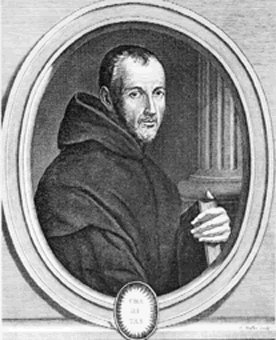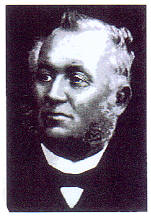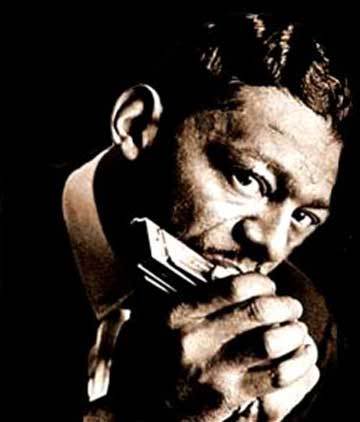25 Oct Short approaching to the beggining of harmonica

Marin Mersènne

Matthias Hohner

Little Walter
Short approaching to the beggining of harmonica
It is difficult to make on a brief review an approach to the history and importance of this small instrument called harmonica, because the subject is vast and really extensive.
Although its origins go back to Asian civilisations before Christ, the term “harmonica” was first used in Europe and North America in the late eighteenth century, as a generic name applied to various musical instruments. The first significant reference to the ‘mouth organ’ us back to the seventeenth century, specifically the French writer Marin Mersenne, who, in 1636, described a ‘harmonica’ that was originated in Asia. During the following decades, this instrument became popular among the higher classes of French society, and even a member of the court of Louis XIV described in his memoirs a party at Versailles enlivened by a few artists who came from Persia and who played that instrument. But undoubtedly, the great promoter and producer of what is now known as harmonica, was a German man called Matthias Hohner.
The first Hohner made instruments which arrived to the United States, were probably sent by Matthias to some relatives who had emigrated to Chicago. Mr. Hohner signed the first contracts for exporting instruments to USA in 1862. From then on he began to introduce harmonica series Hohner Marine Band or the late Caruso among many musicians and American bands of that time so, in 1880, 70% of Hohner annual production was sent by ship to America. In 1901 Matthias Hohner opened a new branch in New York, directed by his son, Hans. This was certainly the beginning of the great popularity of the harmonica in the U.S., not only in rural music but also in a more urban one. For white and black rural musicians of the twenties, the harmonica became an indispensable tool. Festive music performers such as Peg Leg Sam, traditional music players like Harmonica Frank Floyd, folk players like Sonny Terry, country musicians like Herman Crook or blues players like Will Shade, Noah Lewis and Jed Davenport, usually played it, which gave them an enormous prestige and success. One of the major characteristics of rural harmonica players at that time was, while playing, they tried to imitate words like ‘daddy’, ‘mummy’, ‘woman’ or ‘water’, and other various sounds and onomatopoeia, like the steam of a locomotive, the whistle of a train, the howl of a wolf, the barking of a dog, the cat’s meow, etc.
As far as jazz is concerned, the popularity of the harmonica began in the mid-twenties, when Hohner manufactured the first chromatic harmonicas, that immediately became well known among jazz harmonica players who until then had been only playing diatonic harmonicas in only in jug and washboard bands. The discovery of chromatic ones with its immense and unlimited possibilities, opened the doors to integrate this small instrument into different bands and orchestras, such as Buddy Rich, Lionel Hampton, Louis Armstrong and Gene Krupa ones, where real virtuosos and talents emerged like Don Les or Charles Leighton among others.
But the harmonica, especially the chromatic one, surpassed all expectations of popular music to be introduced also in the classical music field. Larry Adler got an enormous prestige as a classical solo instrument. Great composers such as Darius Milhaud and Arnold Benjamin wrote musical works for harmonica. John Sebastian was the first harmonica player who was dedicated exclusively to play a classical repertoire, causing great surprise and admiration in the audience who attended his concerts.
Coming back to popular music, the turning point of this instrument came in 1951 when the bluesman Little Walter Jacobs used for the first time in history a microphone connected to a guitar amp to blow his diatonic harmonica. Jacobs had a deep tone, intense, emotional, exciting and over all, with an amazing creativity. Different musicians like Jacobs, Big Mama Thornton who, besides singing was also an harmonica player, or Arthur “Big Boy” Crudup, who sometimes included harmonica in his orchestras too. Those musicians were some of the original sources that would inspire Elvis Presley and other musicians of the time, although, later on, harmonica almost disappeared of rock and roll instrumentation. Fortunately all this changed in 1963 with ‘Love Me Do’, one of the first songs of the Beatles that included a cute and catchy ‘riff’ where John Lennon played the harmonica as the principal chorus of the song.
The most surprising thing was that many British bands who got a great success in the United States following the Beatles and, specially, the Stones path, worshipped and loved blues and their music faithfully reflected their blues influences. Paradoxically despised Afroamerican music got popular among young Americans, thanks to ‘covers’ white British bands played, which mostly included harmonica in its instrumentation and came from original United States black artists who were systematically blocked by white society as ‘race’ music, only devoted to black people. Paul Butterfield was the first white musician who dared to play harmonica in the at that time dangerous Chicago South Side black clubs. He also formed the first rock and blues band that included white and black musicians playing together and they cleverly mixed the rock that was being listened by Anglo audiences with the blues which was mainly heard by Afroamerican audiences. The rest is a familiar well-known story for all blues fans.
Today harmonica has become one of the basic instruments in popular music, not only in blues music, but also in folk, country, rock, ‘southern’ music and other similar styles. The availability, both in harmonicas and accessories, has continuously expanded in different ways (microphones, amplifiers, effects, pedals…) New manufacturers and harmonica models have emerged, such as Lee Oskar, Suzuki or Huang, but Hohner still keeps the first place, with sales that, only in United States, exceed a million items per year. But, the true thing is they are musicians and not manufacturers who have kept and today still keep alive the flame and growing up of this small but at the same time big instrument called Harmonica.
Vicente Zúmel




